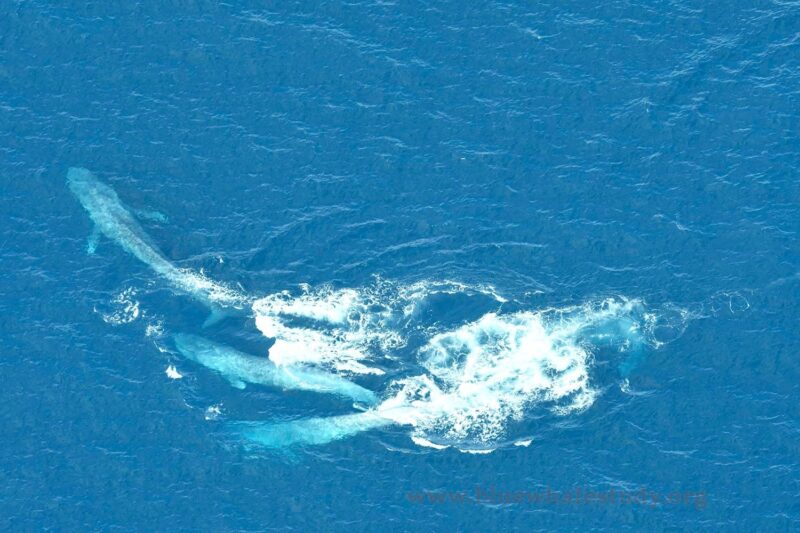In a sighting so rare it has only been witnessed half a dozen times before, two male blue whales were filmed competing for a female. The three whales off the southeast coast of Australia sped through the water in a rarely seen courtship ritual called a racing group.
Both males chased the female while also racing each other and slamming their gigantic bodies into one another. This contest to become the female’s escort happens quite regularly with humpbacks, but witnessing the same thing with blue whales is incredibly rare. Since blue whales are the largest animals that have ever lived, this is the largest mating dance on Earth.
Peter Gill of the Blue Whale Study has only seen it once before, despite decades of research. He and his team were conducting an aerial study off Australia’s coast when they caught the event. In racing groups, the pattern is always the same: The female leads, the males pursue. The males can be very aggressive toward each other. This happens before the whales migrate to their breeding grounds.
Commented Gill:
The frequent changes of pace and direction were clearly dictated by the female. The males did their best to stay close to her, while trying to outpace and physically displace each other. It was a spectacular display of massive power and grace, one of the great sights in nature.
Female calls the shots
The males can sense when the female is fertile, and this triggers the race. When the female speeds up or slows down, so do the males. With blue whales, as far as we know, only two males participate in the racing group.
Smaller humpback whales chase in much larger groups, often up to seven or eight males trailing one female. Researchers are not sure if this a general difference between the species, or if it is due to how few blue whales there are. Past hunting so decimated their numbers that they are still recovering.
Gill described the behavior between males as “full-on combat” and advised anyone in a small boat to get out of their way.
“These animals weigh 120 to 140 tonnes each…[and are] traveling at 15 to 20 knots. It’d be like being hit by a B-double truck, only much heavier — or perhaps a train.”
The phenomenon was exciting but also worried Gill and his team. The female looked particularly skinny, a growing trend among blue whales. Gill told IFL Science that the number of underweight blue whales has increased since 2007.
Many think it could be related to climate change and food availability. Last year near Indonesia, the whales lacked food around their breeding grounds. Then this year, there was a severe shortage of krill in their feeding waters. Researchers are unsure why.






